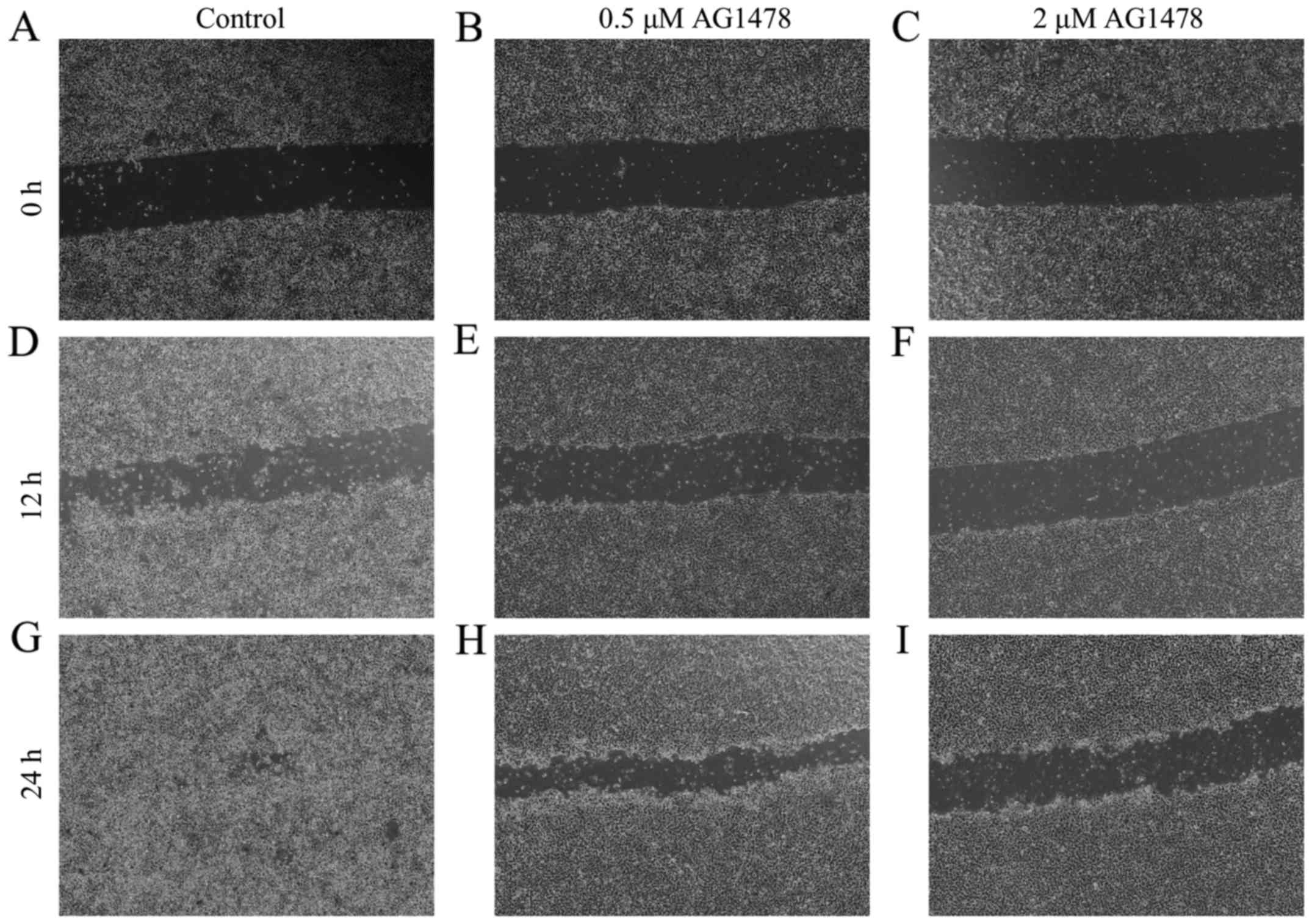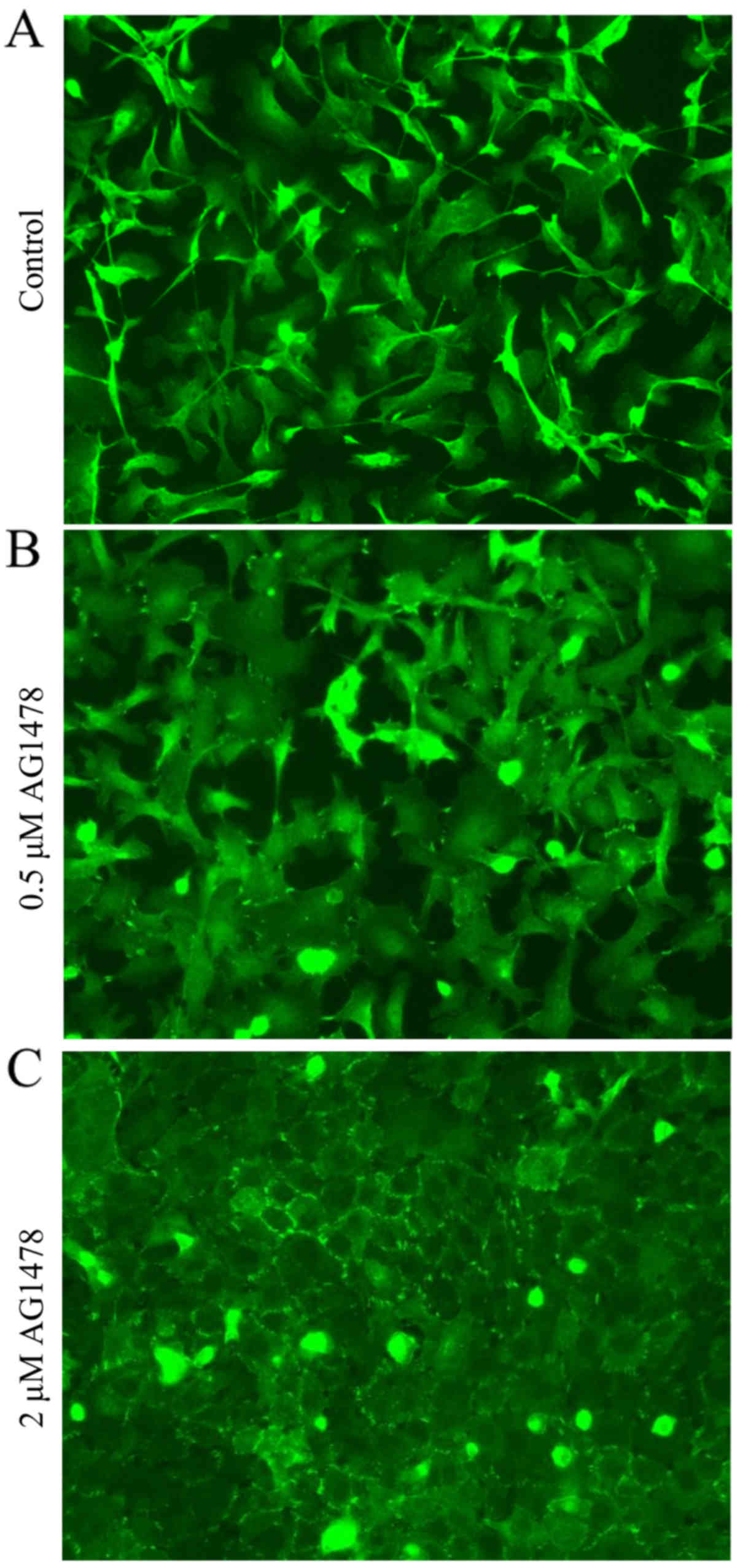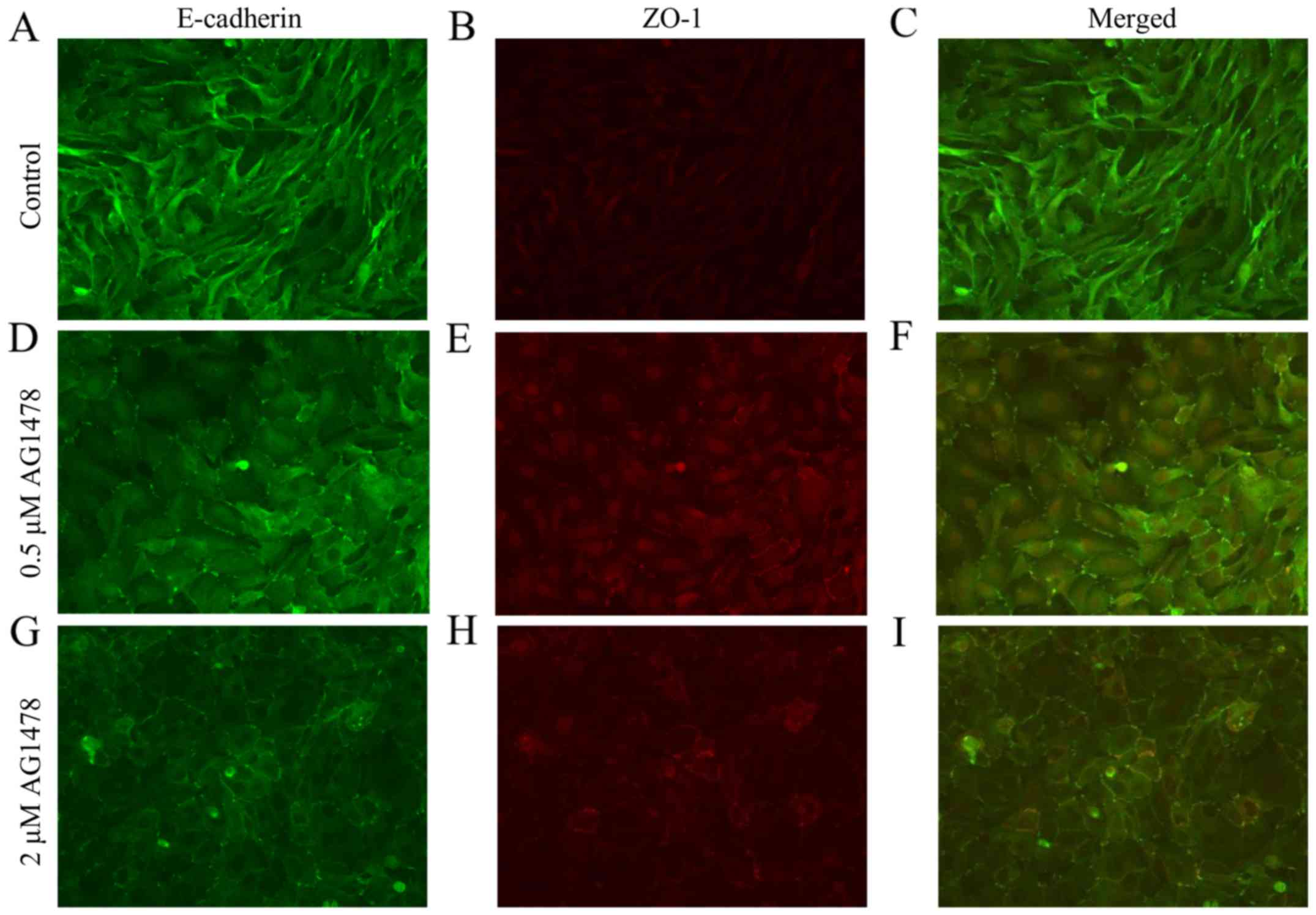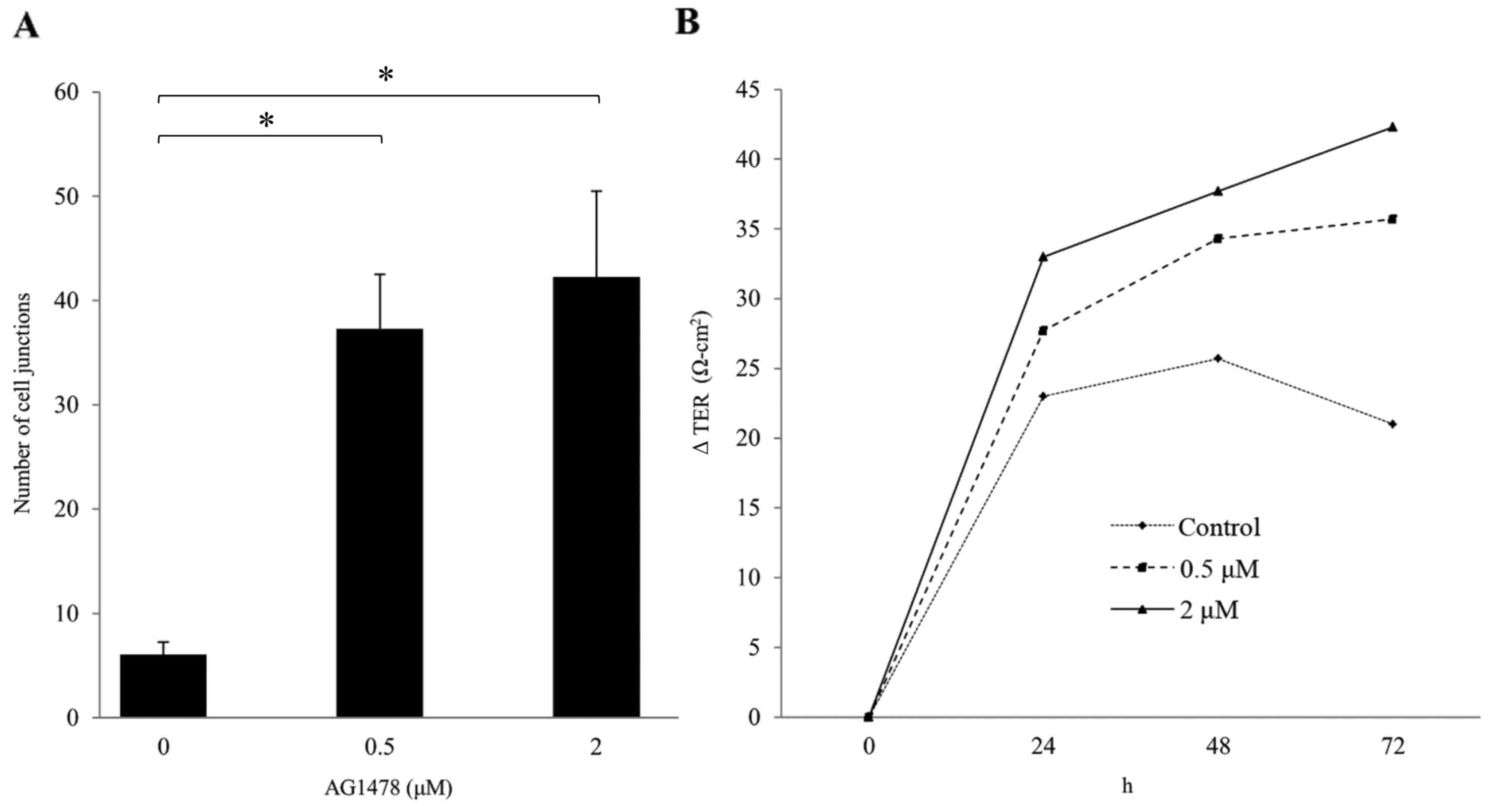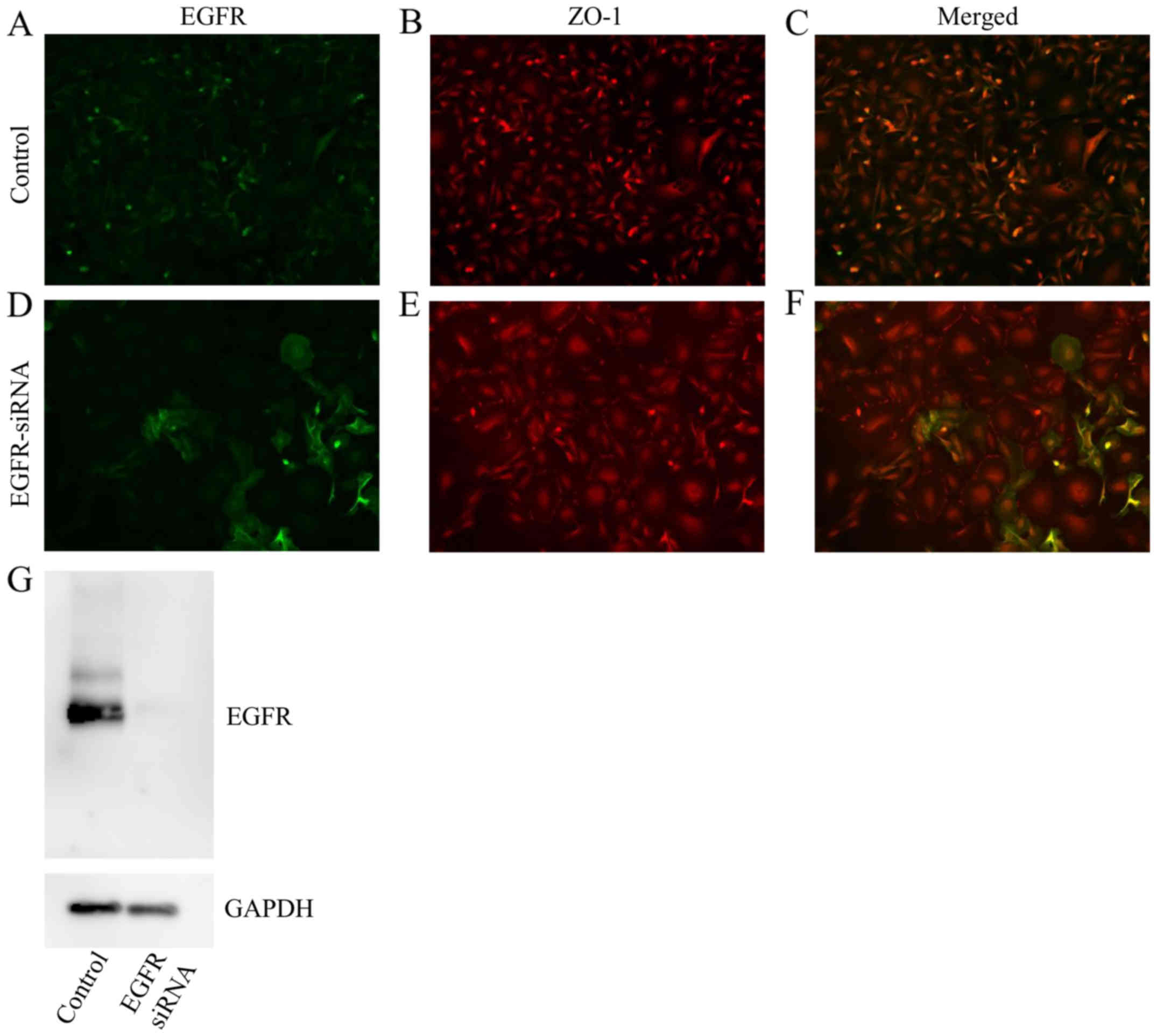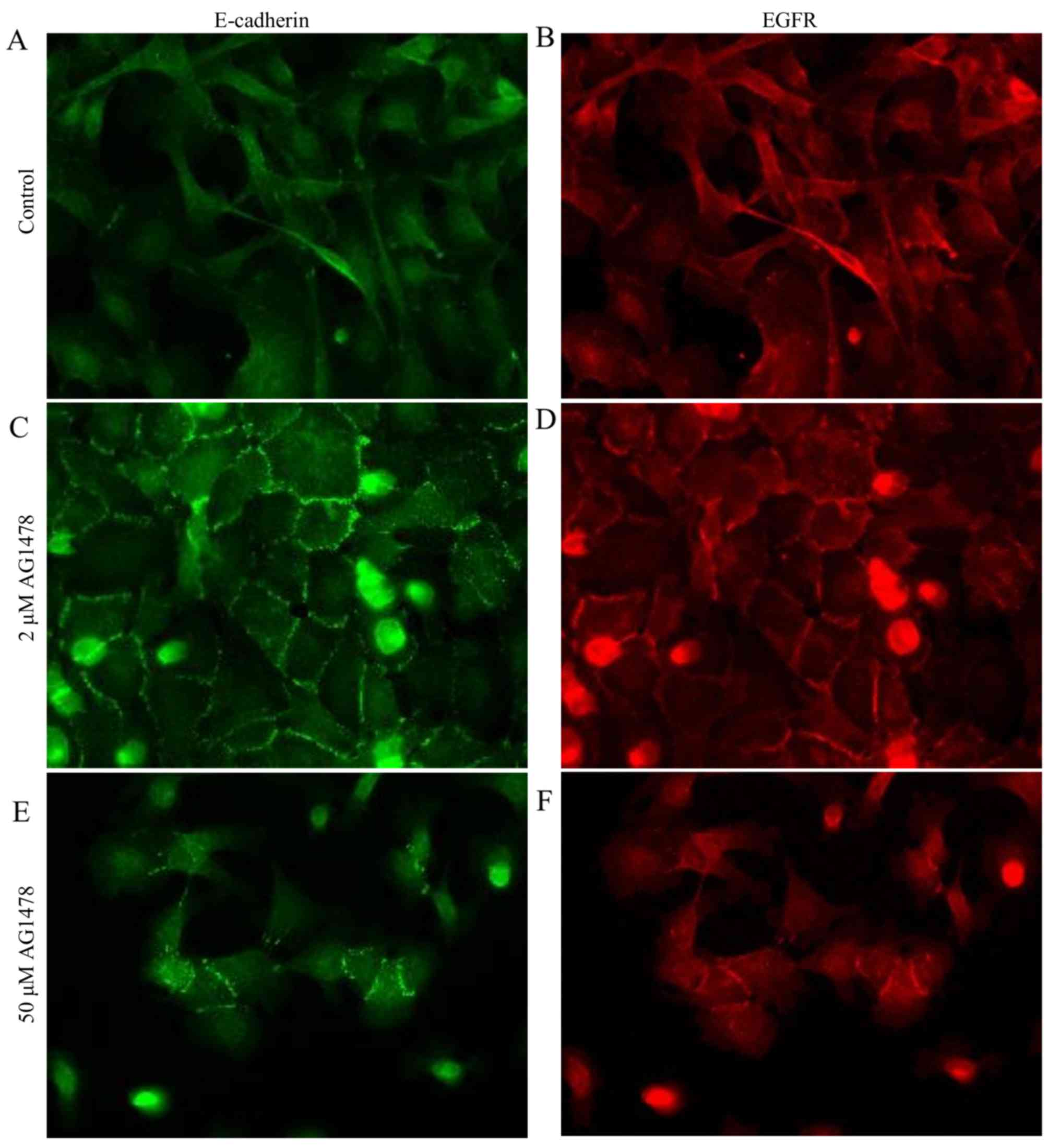|
1
|
Molinolo AA, Amornphimoltham P, Squarize
CH, Castilho RM, Patel V and Gutkind JS: Dysregulated molecular
networks in head and neck carcinogenesis. Oral Oncol. 45:324–334.
2009. View Article : Google Scholar : PubMed/NCBI
|
|
2
|
Sales KU, Giudice FS, Castilho RM, Salles
FT, Squarize CH, Abrahao AC and Pinto DS Jr: Cyclin D1-induced
proliferation is independent of beta-catenin in head and neck
cancer. Oral Dis. 20:e42–e48. 2014. View Article : Google Scholar : PubMed/NCBI
|
|
3
|
Nagpal JK and Das BR: Oral cancer:
Reviewing the present understanding of its molecular mechanism and
exploring the future directions for its effective management. Oral
Oncol. 39:213–221. 2003. View Article : Google Scholar : PubMed/NCBI
|
|
4
|
Tanaka T, Iino M and Goto K: Knockdown of
Sec 6 improves cell-cell adhesion by increasing α-5-catenin in oral
cancer cells. FEBS Lett. 586:924–933. 2012. View Article : Google Scholar : PubMed/NCBI
|
|
5
|
Christiansen JJ and Rajasekaran AK:
Reassessing epithelial to mesenchymal transition as a prerequisite
for carcinoma invasion and metastasis. Cancer Res. 66:8319–8326.
2006. View Article : Google Scholar : PubMed/NCBI
|
|
6
|
Chaw SY, Majeed AA, Dalley AJ, Chan A,
Stein S and Farah CS: Epithelial to mesenchymal transition (EMT)
biomarkers-E-cadherin, beta-catenin, APC and vimentin-in oral
squamous cell carcinogenesis and transformation. Oral Oncol.
48:997–1006. 2012. View Article : Google Scholar : PubMed/NCBI
|
|
7
|
Sakamoto K, Imanishi Y, Tomita T, Shimoda
M, Kameyama K, Shibata K, Sakai N, Ozawa H, Shigetomi S, Fujii R,
et al: Overexpression of SIP1 and downregulation of E-cadherin
predict delayed neck metastasis in stage I/II oral tongue squamous
cell carcinoma after partial glossectomy. Ann Surg Oncol.
19:612–619. 2012. View Article : Google Scholar : PubMed/NCBI
|
|
8
|
Munshi HG, Ghosh S, Mukhopadhyay S, Wu YI,
Sen R, Green KJ and Stack MS: Proteinase suppression by
E-cadherin-mediated cell-cell attachment in premalignant oral
keratinocytes. J Biol Chem. 277:38159–38167. 2002. View Article : Google Scholar : PubMed/NCBI
|
|
9
|
Takeichi M: Cadherin cell adhesion
receptors as a morphogenetic regulator. Science. 251:1451–1455.
1991. View Article : Google Scholar : PubMed/NCBI
|
|
10
|
Nagafuchi A: Molecular architecture of
adherens junctions. Curr Opin Cell Biol. 13:600–603. 2001.
View Article : Google Scholar : PubMed/NCBI
|
|
11
|
Van Aken E, De Wever O, da Rocha AS
Correia and Mareel M: Defective E-cadherin/catenin complexes in
human cancer. Virchows Arch. 439:725–751. 2001. View Article : Google Scholar : PubMed/NCBI
|
|
12
|
Frixen UH and Nagamine Y: Stimulation of
urokinase-type plasminogen activator expression by blockage of
E-cadherin-dependent cell-cell adhesion. Cancer Res. 53:3618–3623.
1993.PubMed/NCBI
|
|
13
|
Forastiere AA and Burtness BA: Epidermal
growth factor receptor inhibition in head and neck cancer-more
insights, but more questions. J Clin Oncol. 25:2152–2155. 2007.
View Article : Google Scholar : PubMed/NCBI
|
|
14
|
Lee CH, Hung HW, Hung PH and Shieh YS:
Epidermal growth factor receptor regulates beta-catenin location,
stability, and transcriptional activity in oral cancer. Mol Cancer.
9:642010. View Article : Google Scholar : PubMed/NCBI
|
|
15
|
Lilien J and Balsamo J: The regulation of
cadherin-mediated adhesion by tyrosine
phosphorylation/dephosphorylation of beta-catenin. Curr Opin Cell
Biol. 17:459–465. 2005. View Article : Google Scholar : PubMed/NCBI
|
|
16
|
Hoschuetzky H, Aberle H and Kemler R:
Beta-catenin mediates the interaction of the cadherin-catenin
complex with epidermal growth factor receptor. J Cell Biol.
127:1375–1380. 1994. View Article : Google Scholar : PubMed/NCBI
|
|
17
|
Ciardiello F and Tortora G: EGFR
antagonists in cancer treatment. N Engl J Med. 358:1160–1174. 2008.
View Article : Google Scholar : PubMed/NCBI
|
|
18
|
Chong CR and Jänne PA: The quest to
overcome resistance to EGFR-targeted therapies in cancer. Nat Med.
19:1389–1400. 2013. View
Article : Google Scholar : PubMed/NCBI
|
|
19
|
Vermorken JB, Mesia R, Rivera F, Remenar
E, Kawecki A, Rottey S, Erfan J, Zabolotnyy D, Kienzer HR, Cupissol
D, et al: Platinum-based chemotherapy plus cetuximab in head and
neck cancer. N Engl J Med. 359:1116–1127. 2008. View Article : Google Scholar : PubMed/NCBI
|
|
20
|
Bonner JA, Harari PM, Giralt J, Azarnia N,
Shin DM, Cohen RB, Jones CU, Sur R, Raben D, Jassem J, et al:
Radiotherapy plus cetuximab for squamous-cell carcinoma of the head
and neck. N Engl J Med. 354:567–578. 2006. View Article : Google Scholar : PubMed/NCBI
|
|
21
|
Itoh M, Yonemura S, Nagafuchi A and
Tsukita S and Tsukita S: A 220-kD undercoat-constitutive protein:
Its specific localization at cadherin-based cell-cell adhesion
sites. J Cell Biol. 115:1449–1462. 1991. View Article : Google Scholar : PubMed/NCBI
|
|
22
|
Higashi T, Tokuda S, Kitajiri S, Masuda S,
Nakamura H, Oda Y and Furuse M: Analysis of the ‘angulin’ proteins
LSR, ILDR1 and ILDR2-tricellulin recruitment, epithelial barrier
function and implication in deafness pathogenesis. J Cell Sci.
126:966–977. 2013. View Article : Google Scholar : PubMed/NCBI
|
|
23
|
Takai E, Tan X, Tamori Y, Hirota M, Egami
H and Ogawa M: Correlation of translocation of tight junction
protein Zonula occludens-1 and activation of epidermal growth
factor receptor in the regulation of invasion of pancreatic cancer
cells. Int J Oncol. 27:645–651. 2005.PubMed/NCBI
|
|
24
|
Takaoka S, Iwase M, Uchida M, Yoshiba S,
Kondo G, Watanabe H, Ohashi M, Nagumo M and Shintani S: Effect of
combining epidermal growth factor receptor inhibitors and cisplatin
on proliferation and apoptosis of oral squamous cell carcinoma
cells. Int J Oncol. 30:1469–1476. 2007.PubMed/NCBI
|
|
25
|
Zhang YG, Du Q, Fang WG, Jin ML and Tian
XX: Tyrphostin AG1478 suppresses proliferation and invasion of
human breast cancer cells. Int J Oncol. 33:595–602. 2008.PubMed/NCBI
|
|
26
|
Monteiro L, Ricardo S, Delgado M, Garcez
F, do Amaral B and Lopes C: Phosphorylated EGFR at tyrosine 1173
correlates with poor prognosis in oral squamous cell carcinomas.
Oral Dis. 20:178–185. 2014. View Article : Google Scholar : PubMed/NCBI
|
|
27
|
Kakei Y, Akashi M, Shigeta T, Hasegawa T
and Komori T: Alteration of cell-cell junctions in cultured human
lymphatic endothelial cells with inflammatory cytokine stimulation.
Lymphat Res Biol. 12:136–143. 2014. View Article : Google Scholar : PubMed/NCBI
|
|
28
|
Störkel S, Reichert T, Reiffen KA and
Wagner W: EGFR and PCNA expression in oral squamous cell
carcinomas-A valuable tool in estimating the patient's prognosis.
Eur J Cancer B Oral Oncol. 29B:1–277. 1993.PubMed/NCBI
|
|
29
|
Monteiro LS, Diniz-Freitas M,
Garcia-Caballero T, Forteza J and Fraga M: EGFR and Ki-67
expression in oral squamous cell carcinoma using tissue microarray
technology. J Oral Pathol Med. 39:571–578. 2010.PubMed/NCBI
|
|
30
|
Hamaguchi M, Matsuyoshi N, Ohnishi Y,
Gotoh B, Takeichi M and Nagai Y: p60v-src causes tyrosine
phosphorylation and inactivation of the N-cadherin-catenin cell
adhesion system. EMBO J. 12:307–314. 1993.PubMed/NCBI
|
|
31
|
Shibata T, Gotoh M, Ochiai A and Hirohashi
S: Association of plakoglobin with APC, a tumor suppressor gene
product and its regulation by tyrosine phosphorylation. Biochem
Biophys Res Commun. 203:519–522. 1994. View Article : Google Scholar : PubMed/NCBI
|
|
32
|
Kawano K, Kantak SS, Murai M, Yao CC and
Kramer RH: Integrin alpha3beta1 engagement disrupts intercellular
adhesion. Exp Cell Res. 262:180–196. 2001. View Article : Google Scholar : PubMed/NCBI
|
|
33
|
Shen X and Kramer RH: Adhesion-mediated
squamous cell carcinoma survival through ligand-independent
activation of epidermal growth factor receptor. Am J Pathol.
165:1315–1329. 2004. View Article : Google Scholar : PubMed/NCBI
|
|
34
|
Moro L, Dolce L, Cabodi S, Bergatto E,
Erba E Boeri, Smeriglio M, Turco E, Retta SF, Giuffrida MG,
Venturino M, et al: Integrin-induced epidermal growth factor (EGF)
receptor activation requires c-Src and p130Cas and leads to
phosphorylation of specific EGF receptor tyrosines. J Biol Chem.
277:9405–9414. 2001. View Article : Google Scholar : PubMed/NCBI
|
|
35
|
Harari PM and Huang SM: Combining EGFR
inhibitors with radiation or chemotherapy: Will preclinical studies
predict clinical results? Int J Radiat Oncol Biol Phys. 58:976–983.
2004. View Article : Google Scholar : PubMed/NCBI
|
|
36
|
Nagy P, Arndt-Jovin DJ and Jovin TM: Small
interfering RNAs suppress the expression of endogenous and
GFP-fused epidermal growth factor receptor (erbB1) and induce
apoptosis in erbB1-overexpressing cells. Exp Cell Res. 285:39–49.
2003. View Article : Google Scholar : PubMed/NCBI
|
|
37
|
Weihua Z, Tsan R, Huang WC, Wu Q, Chiu CH,
Fidler IJ and Hung MC: Survival of cancer cells is maintained by
EGFR independent of its kinase activity. Cancer Cell. 13:385–393.
2008. View Article : Google Scholar : PubMed/NCBI
|
|
38
|
Fung C, Chen X, Grandis JR and Duvvuri U:
EGFR tyrosine kinase inhibition induces autophagy in cancer cells.
Cancer Biol Ther. 13:1417–1424. 2012. View Article : Google Scholar : PubMed/NCBI
|
|
39
|
Cheng JC, Qiu X, Chang HM and Leung PC:
HER2 mediates epidermal growth factor-induced down-regulation of
E-cadherin in human ovarian cancer cells. Biochem Biophys Res
Commun. 434:81–86. 2013. View Article : Google Scholar : PubMed/NCBI
|
|
40
|
Wang D, Su L, Huang D, Zhang H, Shin DM
and Chen ZG: Downregulation of E-Cadherin enhances proliferation of
head and neck cancer through transcriptional regulation of EGFR.
Mol Cancer. 10:1162011. View Article : Google Scholar : PubMed/NCBI
|
|
41
|
Wang F, Sloss C, Zhang X, Lee SW and
Cusack JC: Membrane-bound heparin-binding epidermal growth factor
like growth factor regulates E-cadherin expression in pancreatic
carcinoma cells. Cancer Res. 67:8486–8493. 2007. View Article : Google Scholar : PubMed/NCBI
|
|
42
|
Cavallaro U and Christofori G: Cell
adhesion and signalling by cadherins and Ig-CAMs in cancer. Nat Rev
Cancer. 4:118–132. 2004. View Article : Google Scholar : PubMed/NCBI
|
|
43
|
Saha B, Chaiwun B, Imam SS, Tsao-Wei DD,
Groshen S, Naritoku WY and Imam SA: Overexpression of E-cadherin
protein in metastatic breast cancer cells in bone. Anticancer Res.
27:3903–3908. 2007.PubMed/NCBI
|
|
44
|
Chao YL, Shepard CR and Wells A: Breast
carcinoma cells re-express E-cadherin during mesenchymal to
epithelial reverting transition. Mol Cancer. 9:1792010. View Article : Google Scholar : PubMed/NCBI
|
|
45
|
Gunasinghe NP, Wells A, Thompson EW and
Hugo HJ: Mesenchymal-epithelial transition (MET) as a mechanism for
metastatic colonisation in breast cancer. Cancer Metastasis Rev.
31:469–478. 2012. View Article : Google Scholar : PubMed/NCBI
|
|
46
|
Kowalski PJ, Rubin MA and Kleer CG:
E-cadherin expression in primary carcinomas of the breast and its
distant metastases. Breast Cancer Res. 5:R217–R222. 2003.
View Article : Google Scholar : PubMed/NCBI
|
|
47
|
St Croix B and Kerbel RS: Cell adhesion
and drug resistance in cancer. Curr Opin Oncol. 9:549–556. 1997.
View Article : Google Scholar : PubMed/NCBI
|
|
48
|
St Croix B, Sheehan C, Rak JW, Flørenes
VA, Slingerland JM and Kerbel RS: E-Cadherin-dependent growth
suppression is mediated by the cyclin-dependent kinase inhibitor
p27(KIP1). J Cell Biol. 142:557–571. 1998. View Article : Google Scholar : PubMed/NCBI
|
|
49
|
Green SK, Frankel A and Kerbel RS:
Adhesion-dependent multicellular drug resistance. Anticancer Drug
Des. 14:153–168. 1999.PubMed/NCBI
|
|
50
|
Damiano JS, Hazlehurst LA and Dalton WS:
Cell adhesion-mediated drug resistance (CAM-DR) protects the K562
chronic myelogenous leukemia cell line from apoptosis induced by
BCR/ABL inhibition, cytotoxic drugs, and gamma-irradiation.
Leukemia. 15:1232–1239. 2001. View Article : Google Scholar : PubMed/NCBI
|
|
51
|
Sui X, Kong N, Ye L, Han W, Zhou J, Zhang
Q, He C and Pan H: p38 and JNK MAPK pathways control the balance of
apoptosis and autophagy in response to chemotherapeutic agents.
Cancer Lett. 344:174–179. 2014. View Article : Google Scholar : PubMed/NCBI
|















